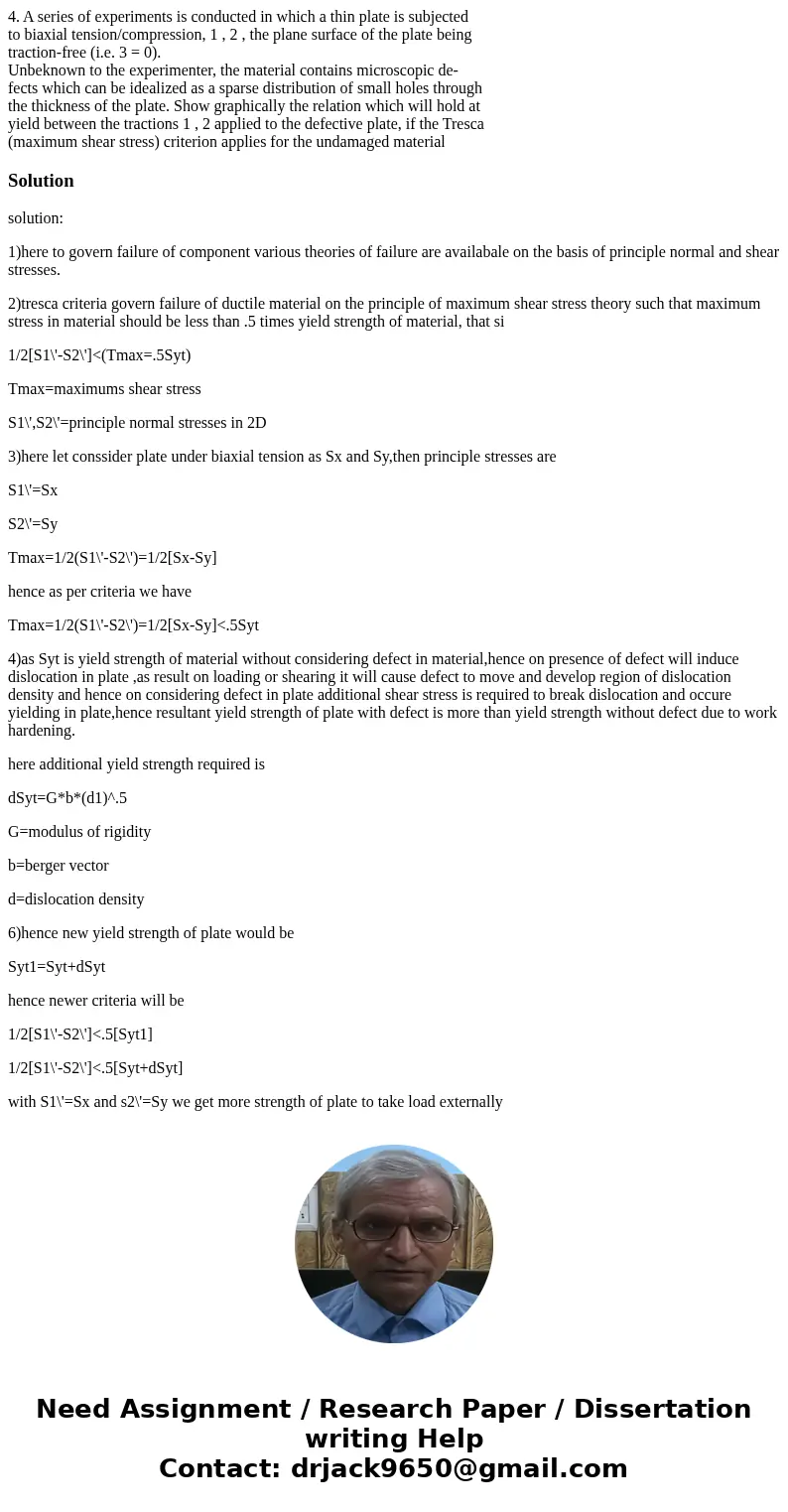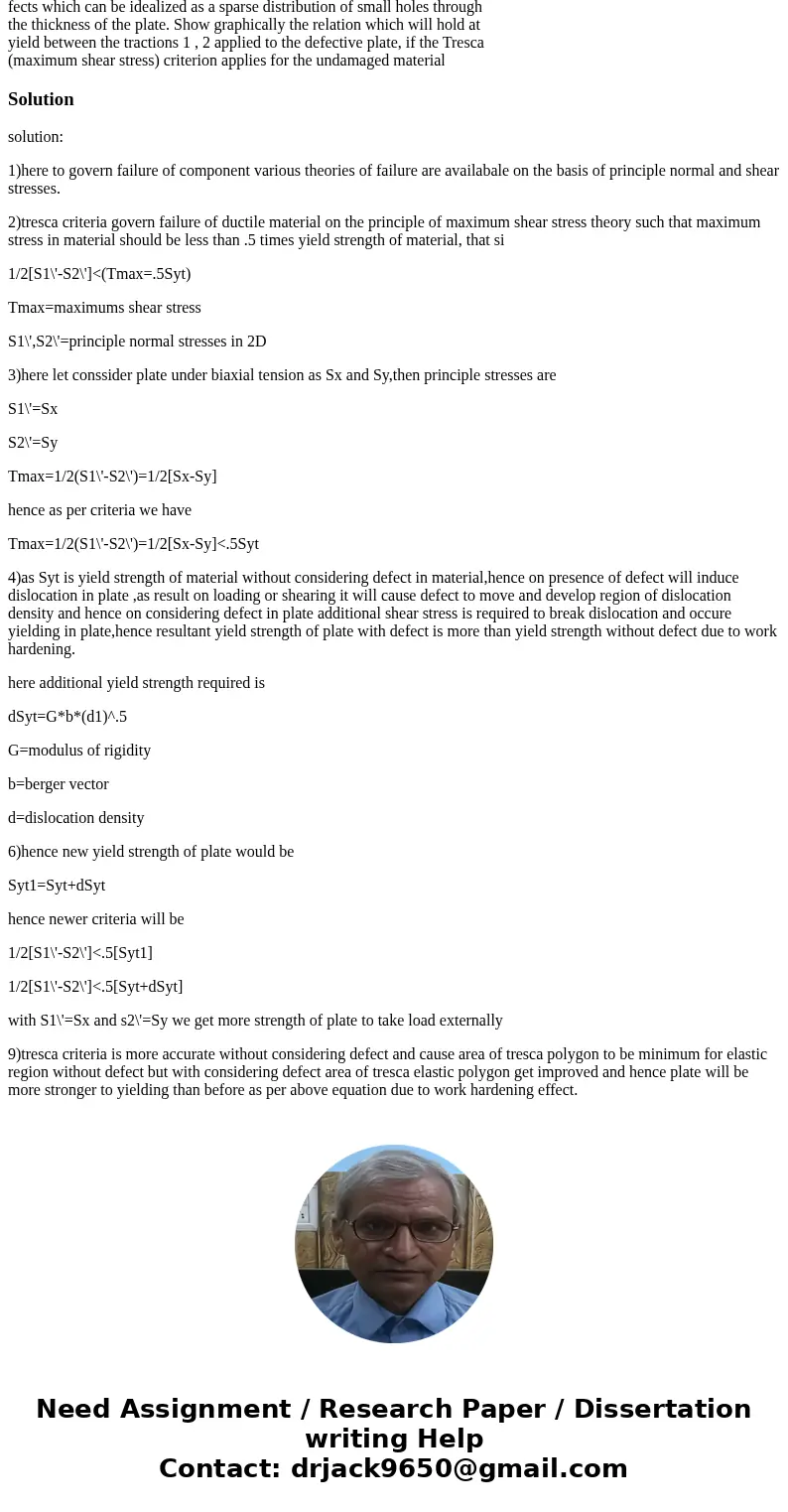4 A series of experiments is conducted in which a thin plate
4. A series of experiments is conducted in which a thin plate is subjected
to biaxial tension/compression, 1 , 2 , the plane surface of the plate being
traction-free (i.e. 3 = 0).
Unbeknown to the experimenter, the material contains microscopic de-
fects which can be idealized as a sparse distribution of small holes through
the thickness of the plate. Show graphically the relation which will hold at
yield between the tractions 1 , 2 applied to the defective plate, if the Tresca
(maximum shear stress) criterion applies for the undamaged material
Solution
solution:
1)here to govern failure of component various theories of failure are availabale on the basis of principle normal and shear stresses.
2)tresca criteria govern failure of ductile material on the principle of maximum shear stress theory such that maximum stress in material should be less than .5 times yield strength of material, that si
1/2[S1\'-S2\']<(Tmax=.5Syt)
Tmax=maximums shear stress
S1\',S2\'=principle normal stresses in 2D
3)here let conssider plate under biaxial tension as Sx and Sy,then principle stresses are
S1\'=Sx
S2\'=Sy
Tmax=1/2(S1\'-S2\')=1/2[Sx-Sy]
hence as per criteria we have
Tmax=1/2(S1\'-S2\')=1/2[Sx-Sy]<.5Syt
4)as Syt is yield strength of material without considering defect in material,hence on presence of defect will induce dislocation in plate ,as result on loading or shearing it will cause defect to move and develop region of dislocation density and hence on considering defect in plate additional shear stress is required to break dislocation and occure yielding in plate,hence resultant yield strength of plate with defect is more than yield strength without defect due to work hardening.
here additional yield strength required is
dSyt=G*b*(d1)^.5
G=modulus of rigidity
b=berger vector
d=dislocation density
6)hence new yield strength of plate would be
Syt1=Syt+dSyt
hence newer criteria will be
1/2[S1\'-S2\']<.5[Syt1]
1/2[S1\'-S2\']<.5[Syt+dSyt]
with S1\'=Sx and s2\'=Sy we get more strength of plate to take load externally
9)tresca criteria is more accurate without considering defect and cause area of tresca polygon to be minimum for elastic region without defect but with considering defect area of tresca elastic polygon get improved and hence plate will be more stronger to yielding than before as per above equation due to work hardening effect.


 Homework Sourse
Homework Sourse